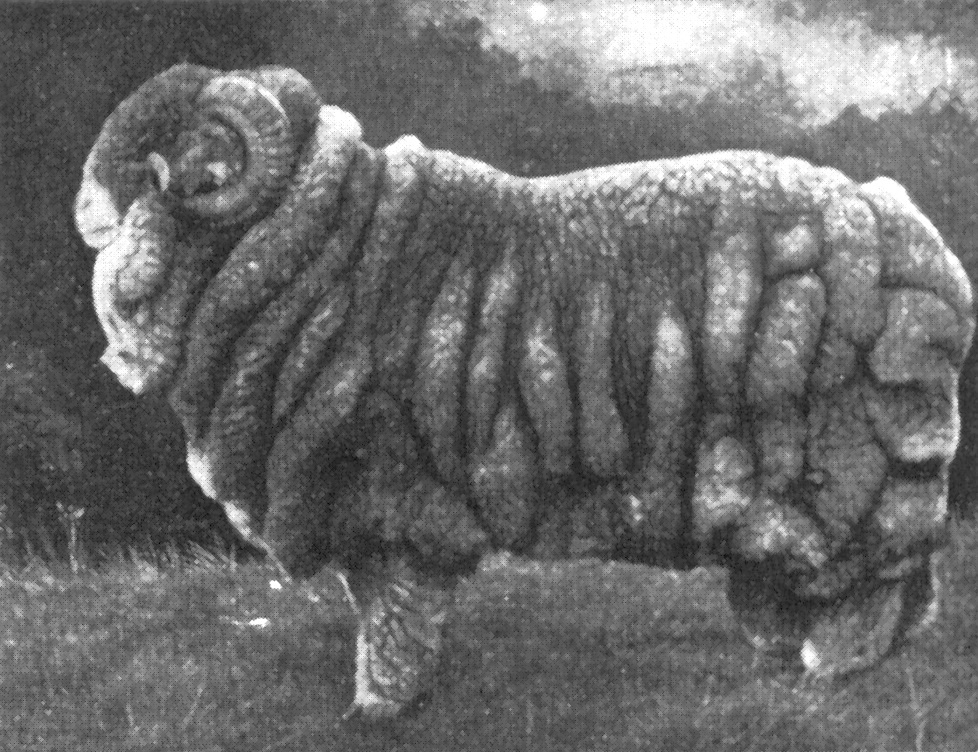Wool
Description
Wool is the most widely utilized resource for fabrics on the Imelian continent. While the usage of cotton has increased, it remains relatively expensive due to its requirement of import. The most common animal wool is collected from, is the Bochman sheep.Physical Characteristics
In its unprocessed state, wool looks coarse and tangled. It's colour depends on the animal of origin, but it mostly ranges from greyish white to black. Once processed, the feeling of the texture depends on the treatment it received.Odor
Wool easily takes on the smell of whatever it has been treated with. Before processing it will retain the smell of the animal it comes from.Due to this characteristic farmers would hang tufts of wool downwind in order to distract possible predators.
Royalty on the other hand would use heavily perfumed wool curtains and wall carpets to cover up unpleasant smells, before the wide implementation of plumbing and sanitation.
History & Usage
History
The earliest use of wool can be traced back to prehistoric nomadic tribes out on the Great Plains of Borsca. The shaving of animals, presumably goats and the spinning of yarn can be found illustrated on pottery found at various digging sites.
The earliest use of wool in Imelia can be traced back to about 10.000 BUC. This correlates with the establishment of the first farming communities on the continent.
The earliest use of wool in Imelia can be traced back to about 10.000 BUC. This correlates with the establishment of the first farming communities on the continent.
Everyday use
Wool is mostly used in the production of clothing, both for indoor and outdoor wear.
Industrial Use
Wool is often used as industrial isolation material. Pressed in to dense bricks it enjoys wide popularity due to its flexibility and relatively high flame resistance.




Comments